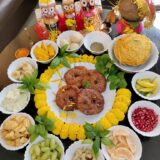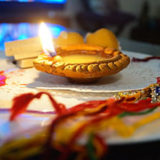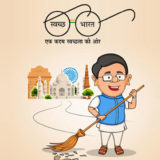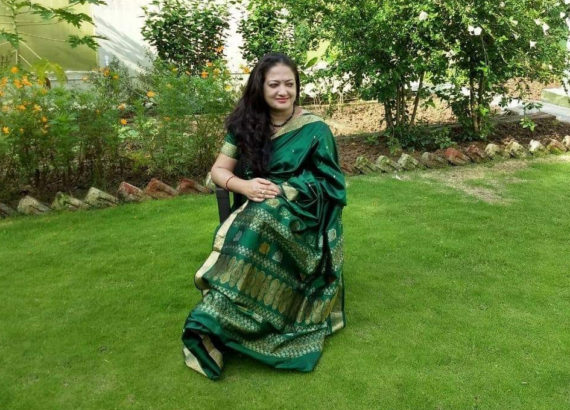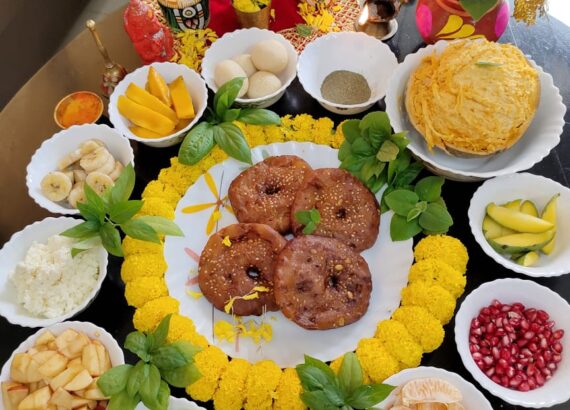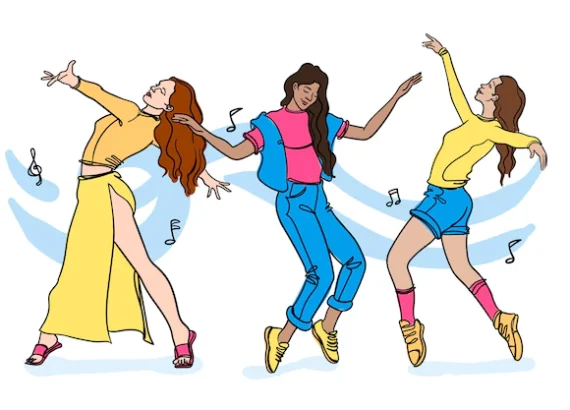Shree Radhe Radhe-Story Of Lord Krishna

The month of Shravan and Bhadra brings in a fresh fragrance with celebrations and joyous ambiance, when the entire society soaks in the mood of festivity. People from all corners of our country gets geared up to celebrate Krishna Janmashtami in the Shravan or Bhadra month of Hindu calendar. With great devotion and enthusiasm devotees observe fasting during the day and stay awake until midnight to offer prayers and after that, they feed themselves with fruits, sabudana kheer, sweet lassi, and other foods that is considered as auspicious.
THE BIRTH OF LORD KRISHNA
——————————————
Krishna took birth in the midnight of 8th day (Ashtami) of the dark fortnight (Krishna Paksha) of Bhadrapada month (Lunar month – Shravan). The Indian as well as Western scholars believe that Lord Krishna lived in the period between 3200 BC and 3100 BC. As per some astrological calculations, the date of Krishna’s birth is supposed to be 18 July 3228; it is supposed that he lived until 18 February 3102 BC.
In our childhood days we used to hear a lot of tales about Lord Krishna ‘s bal leela from our grandmother and mother. We used to read and listen to the legends…
STORY OF SHRI KRISHNA’S BIRTH
———————————————-
Lord Krishna is the 9th avatar of Vishnu. Krishna took birth as the eighth son of princess Devaki and her husband Vasudeva, who belonged to the Vrishi clan of Yadavas from Mathura. Devaki’s brother Kansa had ascended the Yadava throne by imprisoning his father Ugrasena. Wicked Kansa also imprisoned Vasudeva and Devaki following the prophecy which predicted his death at the hands of Devaki’s eighth son. Devaki’s seventh conception was an apparent miscarriage, after killed the first six infants soon after their birth. The apparent miscarriage was actually a secret transfer of the infant to Rohini (Vasudeva’s another consort) who give birth to Balarama, Krishna’s brother. When Krishna was born, Vishnu ordered Vasudeva to take Krishna to Nanda and Yashoda of Gokul. It was a night of heavy rain; the prison guards fell asleep, the chains got unleashed and the prison gates got unlocked. Vasudeva took baby Krishna with him, crossed the river Yamuna and reached Gokul where everyone was asleep. He kept Krishna there and returned with Yashoda’s baby girl. When Kansa attempted to kill the baby girl, thinking her to be Devaki’s eighth child, she rose into the air, revealed herself as Yogmaya and warned Kansa about his death. Krishna, with his brother Balram, grew up in Gokul. On returning to Mathura he killed Kansa and freed his parents Vasudeva and Devaki with the help of his brother.
SIGNIFICANCE OF LORD KRISHNA
———————————————
As earlier mentioned, Krishna is the ninth and the last incarnated avatar of God Vishnu. Vishnu took birth as Krishna to free the world from evils and to guide people to the path of Dharma ans Satya. Lord Krishna’s life and his miracles are important in the epic Mahabharatha. He is the Lord who narrated Bhagavad Gita, the Hindu holy text preaching Dharma. In Bhagavad Gita, the lord says ‘whenever there is predominance of evil and decline of righteousness, I’ll incarnate to destroy them and to re-establish Dharma in the world’. Hence Janmashtami or Krishna Jayanti symbolises restoring the goodness. It is celebrated to encourage the goodwill and to bring people together, signifying unity and faith.
यदा यदा हि धर्मस्या, ग्लानिर्भवति भारत । अभ्युत्थानम् अधर्मस्या, तदात्मानं सृजाम्यहम् ।।
yadaa yadaa hi dharmasya, glaanirbhavati bhaarata.
abhyutthaanam.h adharmasya, tadaatmaanM sRRijaamyaham.h..
Meaning of this sloka –
Hey Arjuna ! It is Faith which teaches renunciation and is responsible for the elevation and well-being of human beings. Whenever in the passage of time, (yadaa yadaa) Faith (or dharma) is weakened or is under attack, (glaanirbhavati) – and whenever adharma spreads without control (abhyutthaanam.h) – it is then (tadaatmaanM) that I re-incarnate myself (sRRijaamyaham.h) with all my powers to restore Faith. Whenever there is a decline of righteousness, and the rise of unrighteousness, then I re-incarnate myself to teach dharma.LORD KRISHNA – PHYSICAL MANIFESTATION
–———–————————–
His enchanting form with flute in hand is worshipped at homes in India. It is a form to which is poured out devotion and supreme love from the hearts of countless devotees not only in India but also in the West. Millions of spiritual seekers worship Him and repeat His Mantra,
Om Namo Bhagavate Vasudevaya. Krishna rules the hearts of the Gopis and everyone else. He was a cowherd in Vrindavan and Gokul. He exhibited miraculous powers even as a child. He killed many demons.
CELEBRATIONS
————————
Janmashtami is celebrated with colours and fervour all over India. People love to sing, dance,, pray and chant hymns from Bhagavad Gita . Some people observe fast until midnight, offering prayers. In some places, a cradle with infant Krishna’s idol is placed and swung, symbolising his birth.
DAHI HANDI
Little Krishna is famous for stealing of butter. In Maharashtra, Dahi Handi is celebrated with great fervour. Here, groups of men move from place to place to break as many pots as possible and to collect the prize, usually money. A participant in this festival is called a Govinda or Govinda pathak.
An earthen pot containing butter, buttermilk, ghee (milk fat) or milk is hung at a height using a rope. Men who participate have to make a human pyramid by climbing on each other, to reach the pot and to break it. Dahi Handi encourages men to work as a team. This celebration is referred as Uriadi in parts of South India.
RASALILA
—————–
Dramatic enactments of Krishna’s bal leela n ramleela with gopis is a tradition in some parts includingnoth eastern states like Manipur. All traditions and observances of Janmashtami vary with different locations in India as per their tradition and culture.
Janmashtami celebrations are at its peak in places where Krishna spent his life such as Mathura, Gokul and Vrindavan in Uttar Pradesh. These places attract visitors from all over India to participate in the Janmashtami celebrations. Also, hordes of people visit the town of Dwaraka in Gujarat where Krishna is believed to have established his kingdom. People of the town organise major celebrations and the devotees visit Dwarkadhish temple.
In parts of Odisha and Bengal, people celebrate Janmashtami by fasting and reciting Bhagavata Purana. Devotees stay awake until midnight and break their fast only on next day. The next day is called Nanda Utsav which commemorates the joyous celebration of Nanda and Yashoda. Varieties of sweets are prepared and distributed on this day.
In Tamil Nadu, the observances include singing devotional songs, reciting Bhagavad Gita, preparing savouries, fasting, midnight pooja etc. Devotees decorate floor with kolams (patterns drawn with rice batter). Some people draw footprints of Krishna from the entrance to pooja room indicating the arrival of the Lord. Also, they dress the youngest male child in the family with Krishna’s attire and serve prasadam (eatables offered to Lord) to them.
Poojas, fasting, singing of devotional songs, preparation & distribution of eatables ans sweets etc. are common Janmashtami observances in Andhra Pradesh too. Young boys dress up as Krishna and visit neighbours’ and friends’ homes. Milk, curd, sweets and fruits are offered to the Lord before distributing it among the visitors.
Major celebrations are conducted at famous Krishna temples in South India too. Rajagopalaswami Temple Mannargudi, Udupi Bala Krishna temple, Pandavadhoothar temple in Kanchivaram and Guruvayur Krishna temple are some among them. Hordes of devotees visit these temples on the occasion of Janmashtami.
ISKCON
————-
Well, we all know our hearts will never get satisfied without a tour to the ISKCON temples where people celebrate Janmashtami in their special way. Myriads of people from all corners of the world visit this temple to offer puja and welcome baby Krishna during this festival.
So, cheer up and get ready for the coming festival… Gather your friends and family and celebrate Janamashtami with a pious heart and soul.
Hathi Godha palki
Jai kanhaiya lal ki!
Shree Radhe Radhe…

